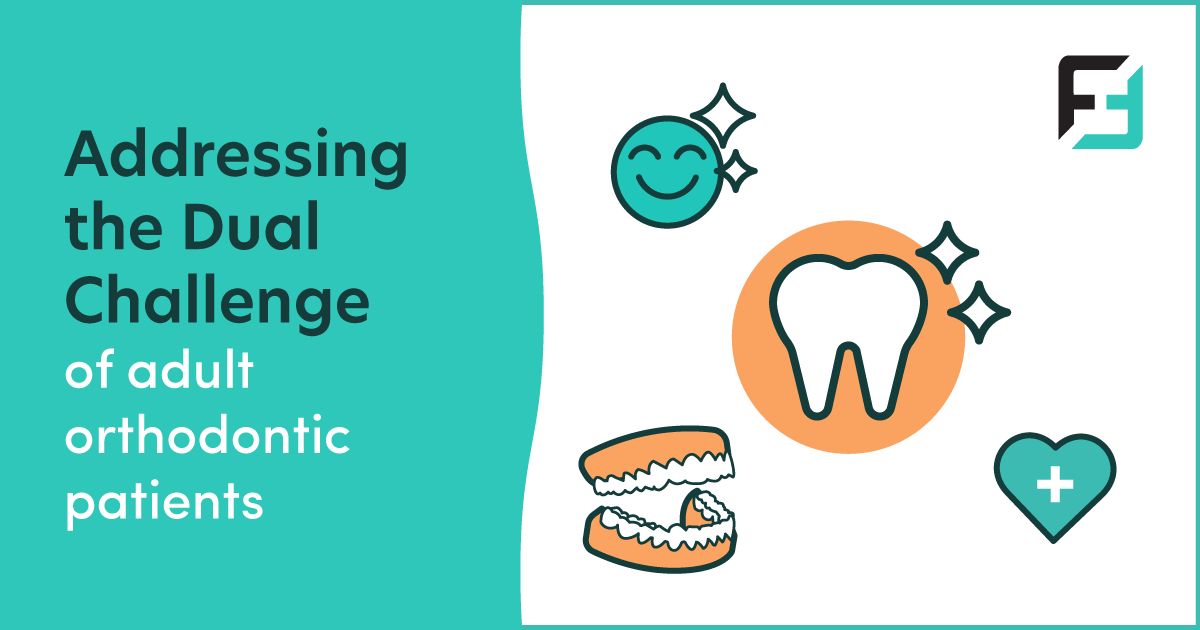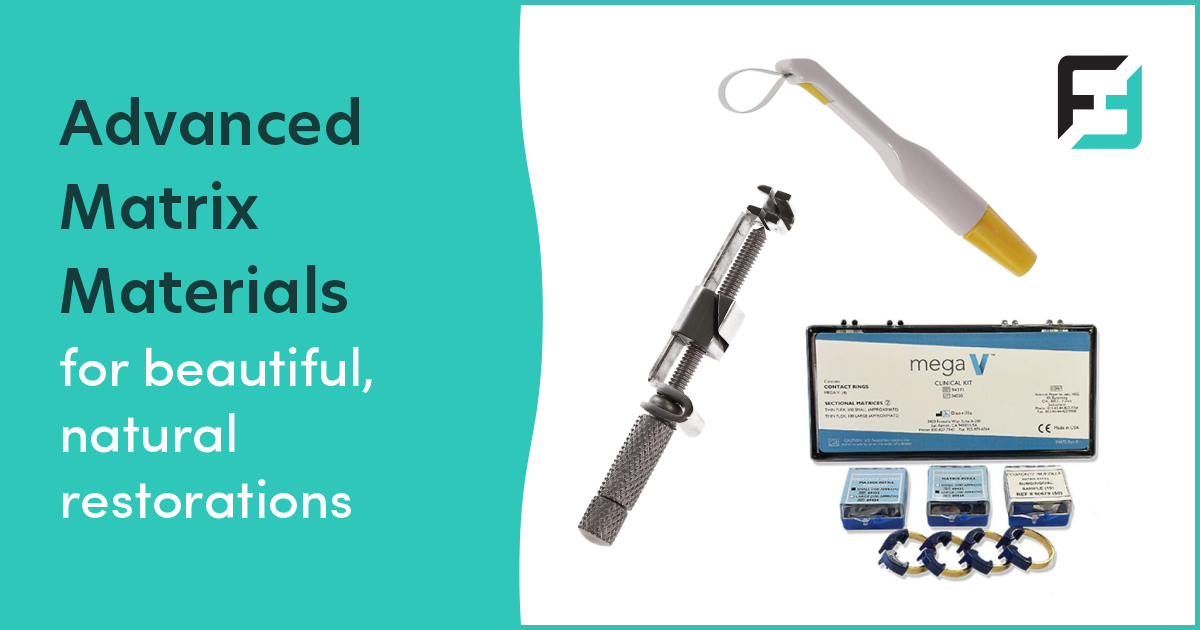How to address the unique aesthetic and dental concerns of adult orthodontic patients seeking orthodontic treatment
Orthodontic treatment is often associated with adolescents and teenagers, marked by the iconic image of braces-wearing youth navigating the challenges of adolescence with smiles on their faces. However, a growing trend in North America shows that an increasing number of adult dental patients are seeking orthodontic care. Adults, motivated by oral health and aesthetics, are seeking orthodontic care to address a variety of dental concerns, ranging from complex bite issues to the pursuit of a more attractive and confident smile. This surge in adult orthodontic patients is redefining the landscape of dental care in North America, and it is a trend that dental professionals cannot afford to ignore.
This shift towards adult orthodontics presents unique challenges and opportunities for dental professionals. In this article, we will explore the factors that set adult dental patients apart from their younger counterparts and provide dental professionals with practical insights on addressing the specific concerns, motivations, and challenges of this demographic. Whether you are a seasoned orthodontist or a general practitioner expanding your services, understanding the distinct characteristics of adult orthodontic patients is essential for providing the best possible care.
Dual Motivation: Oral Health and Aesthetics

Adults present a unique duality in their motivation for seeking orthodontic treatment, and unlike adolescents guided by their guardians, adults typically come to the decision independently. For dental professionals, understanding the dual motivation of adult dental patients is pivotal in providing effective care. It means that the treatment plan should be well-rounded, addressing both the oral health issues and the aesthetic goals of the patient. Dental professionals must evaluate the specific needs of each adult patient thoroughly, considering all factors in the outcome.
In essence, the dual motivation of adult orthodontic patients transforms the treatment process into a holistic experience. Dental professionals are not merely providing oral health care; they are actively contributing to the enhancement of their patients' overall quality of life, confidence, and self-image. This dual motivation underscores the need for dental professionals to adopt a patient-centered approach, emphasizing open communication, customization, and the alignment of treatment goals with the patient's desires and expectations. In doing so, dental professionals can effectively address the unique concerns of adult dental patients seeking orthodontic treatment, providing a transformative and fulfilling experience for their patients.
Addressing Age-Related Dental Concerns

Orthodontic treatment for adult patients is not a one-size-fits-all endeavor. The age-related dental concerns that often accompany adults seeking orthodontic care play a pivotal role in the treatment process. Dental professionals must understand the ways in which these concerns can affect adult orthodontic care to provide effective treatment and ensure the best possible outcomes.
Gum Recession
Gum recession is a common age-related issue and can impact orthodontic care in several ways. Receded gums may expose sensitive tooth roots, making patients more susceptible to discomfort during treatment, such as braces. Additionally, uneven gum lines due to recession can affect the aesthetics of the final orthodontic result. Dental professionals must address these concerns and ensure that orthodontic treatment doesn't exacerbate gum recession. Thus, it's crucial to choose orthodontic appliances and techniques that minimize potential irritation to sensitive root surfaces.
Bone Loss
Reduced bone density around the teeth is another issue frequently seen in older adults. This concern can compromise the stability of tooth roots, making it essential for dental professionals to assess bone health before proceeding with orthodontic treatment. In some cases, bone grafts or other supplementary procedures may be necessary to optimize the outcome of orthodontic care. Moreover, the choice of orthodontic appliances and forces applied must consider the patient's bone health to prevent complications.
Tooth Wear
Many adult patients exhibit signs of tooth wear, which can result from bruxism (teeth grinding) or natural wear and tear over the years. The impact of tooth wear on occlusion and overall dental health is a critical consideration in orthodontic treatment planning. Dental professionals must assess the extent of tooth wear and tailor treatment to align the teeth effectively while preserving their structural integrity. In some cases, restorative dentistry may be necessary before, during, or after orthodontic treatment to address tooth wear.
Tooth Mobility
In some cases, adults experience tooth mobility, making orthodontic treatment increasingly complex. Loose teeth may require extra precautions to stabilize them while they are being moved into their desired positions. Dental professionals may need to use special orthodontic appliances or coordinate with periodontists or oral surgeons to address tooth mobility effectively. Stabilizing mobile teeth is crucial to avoid potential tooth loss during treatment.
Periodontal Health
Adult patients may also contend with periodontal health issues, including gum disease. Effective orthodontic treatment relies on a healthy periodontium (the supporting structures of the teeth, including the gums and bone). Addressing gum disease and ensuring that it's well-managed is crucial for the success of orthodontic treatment.
The Rise of Discreet Orthodontic Treatment Options

Discreet treatment options are a critical aspect of adult orthodontic care. As previously discussed, adults are not only motivated by oral health concerns but also aesthetic reasons. Adult patients often have heightened aesthetic concerns, making it essential to offer orthodontic solutions that align with their desires for a less conspicuous treatment experience. These discreet options address alignment and bite issues effectively while minimizing the visual impact of braces.
For example, clear aligners, such as Invisalign, have gained immense popularity among adult orthodontic patients. These transparent, custom-fitted trays gradually shift teeth into their proper positions. Clear aligners are virtually invisible, and they can be removed for eating and oral hygiene, which adds to their appeal. Another popular choice is ceramic brackets designed to blend in with the natural color of the teeth, making them less noticeable than traditional metal brackets. Dental professionals must have a thorough understanding of discreet treatment options in order to meet the unique needs of adult orthodontic patients.
Conclusion
When it comes to adult orthodontics, one principle emerges as central to success: having a patient-centered approach is key. This approach not only recognizes the multifaceted motivations, concerns, and goals of adult patients but also places open and honest communication at the centre. Open and honest communication is the linchpin that ensures every patient's unique needs, preferences, and expectations, whether oral health or aesthetic-related, are not only acknowledged but thoughtfully integrated into their treatment journey. As more and more adults choose to receive adult orthodontic treatment, dental professionals must direct their methods to address the unique needs and concerns of this demographic.




